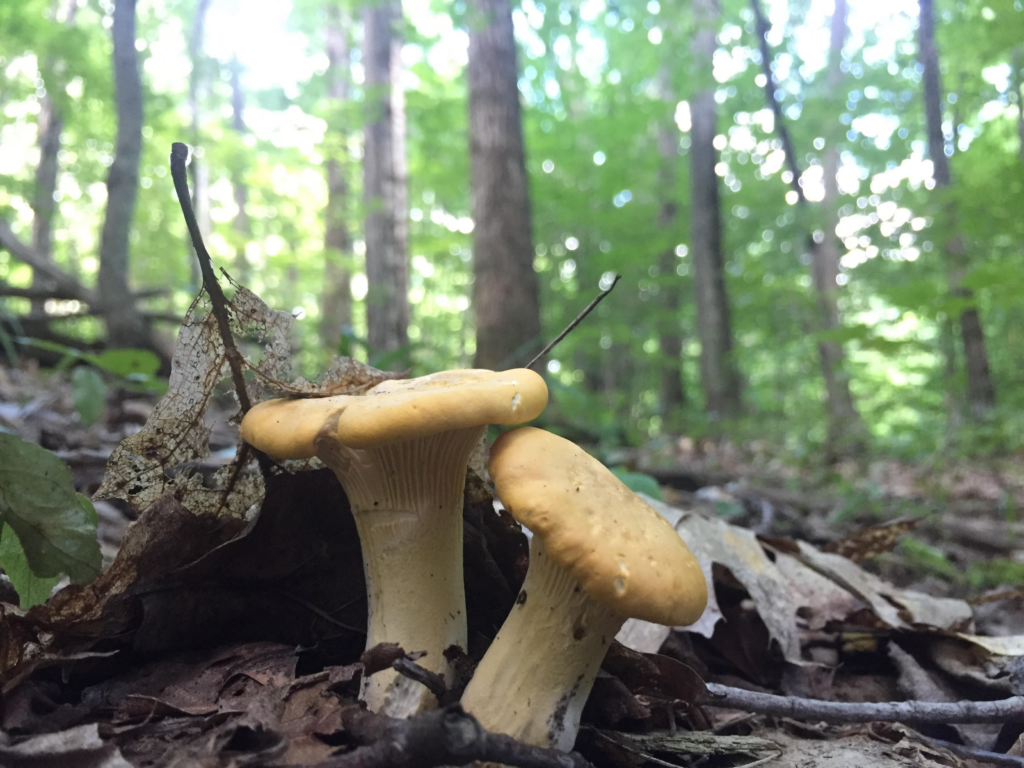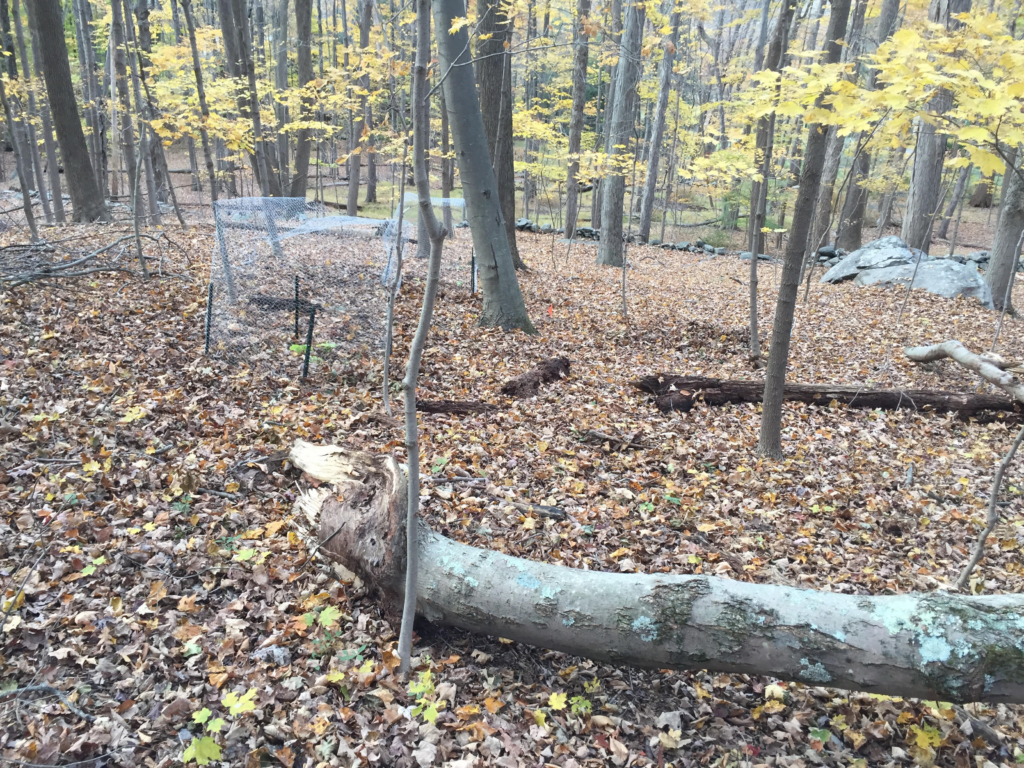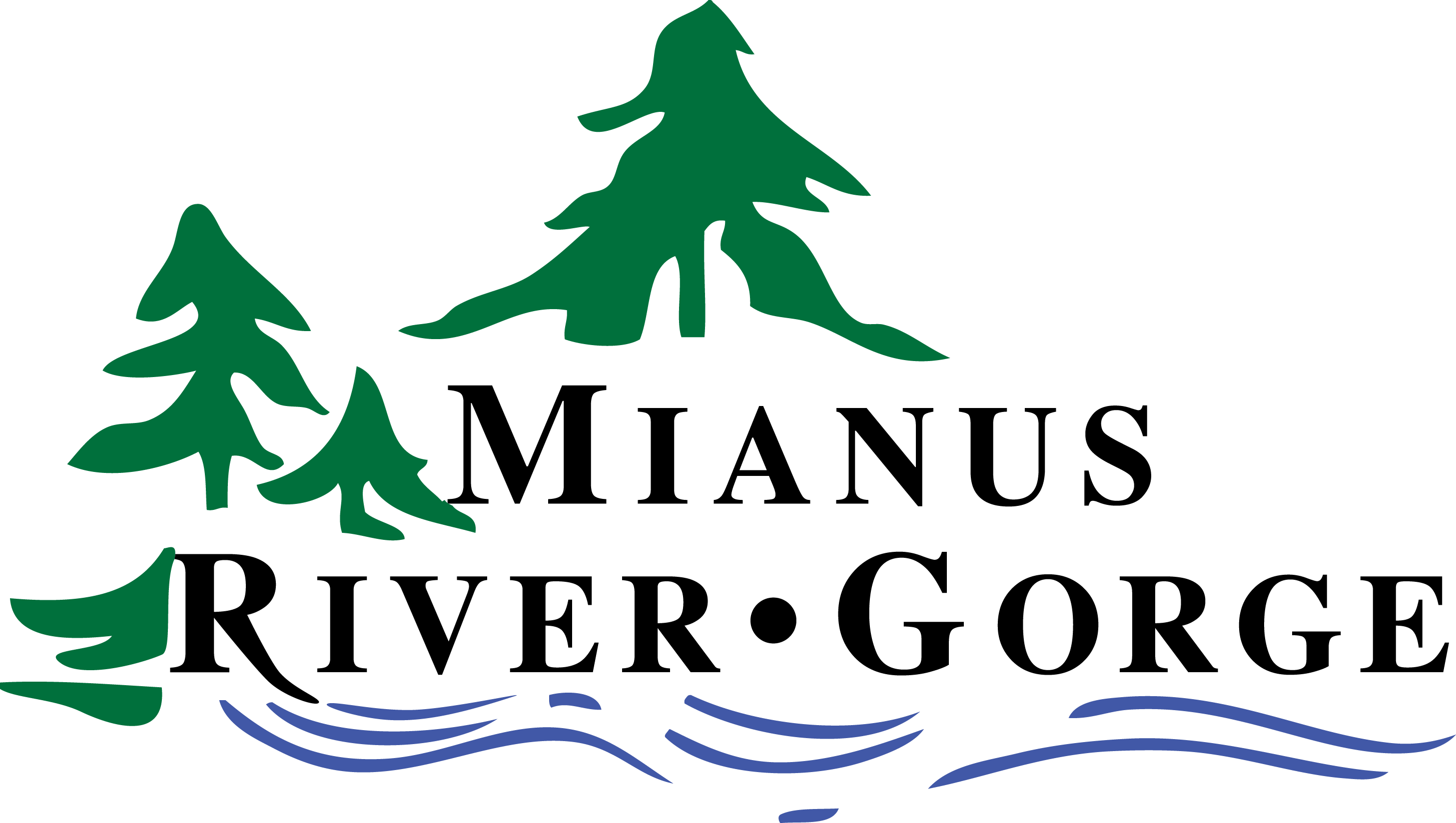By Andy Cortese
As you hike in the Mianus River Gorge Preserve, you may have noticed a stark contrast between the old-growth hemlock forest that dominates the gorge itself and the maple dominated post-agricultural forest farther up the ridge. Approaching the top of the ridge from the bottom of the gorge, the dark evergreen canopy of hemlocks quickly transitions to the bright green canopy of deciduous trees such as maple, tulip poplar, and black birch. You may also notice a corresponding shift from the cathedral-like canopy formed by multiple age classes of trees in the old-growth forest to a single homogenous overstory layer characteristic of a post-agricultural forest. The abandoned stone walls that snake their way through this landscape serve as a reminder of past land use; what is now a forest was once farmland about 80 years ago. The composition of trees, stone wall relics, flattened forest floor, and lack of native understory herbs are all conspicuous reminders of past land use, but the legacies of agriculture can permeate even deeper. If you investigate the soil of a post-agricultural forest, it can be strikingly different than that of an old-growth forest soil. In the old-growth forest, leaves have fallen and decomposed over centuries resulting in a deep organic layer- the dark, rich soil that is effective in retaining water and nutrients necessary for plant growth. In the post-agricultural forest, there is no such layer due to decades of tilling which mixed and homogenized the upper layer. This soil legacy is so widespread that it even has its own designation by soil scientists: the Ap horizon (where the “p” refers to disturbance from plowing).
However, it is not just the physical properties of soil that are different in post-agricultural forests; communities of soil fungi called mycorrhizal fungi may also be affected. Mycorrhizae (which translates to “fungus-root” from Greek) are the symbiotic relationships between plant roots and fungi, where the plant transfers sugars to the fungus, which in turn provides mineral nutrients, water, and pathogen protection to the plant. Most plants form mycorrhizae, and many plants cannot survive without access to compatible mycorrhizal fungi. However, not all mycorrhizae are the same; the two main types of mycorrhizae known as ectomycorrhizae (EM) and arbuscular mycorrhizae (AM). Ectomycorrhizae are formed by Basidiomycete and Ascomycete fungi with woody plants such as hemlock, pine, birch, beech, and oak. There are at least 5,000 species of EM fungi and many of them produce mushrooms including some prized edibles like truffles, chanterelles, porcini, and matsutake. Arbuscular mycorrhizae are formed by an ancient and inconspicuous lineage of fungi called Glomeromycetes with most plant species, including most herbaceous plants and broad-leaved trees like maple, ash, cherry and tulip poplar. AM fungi associate with relatively few species and do not produce mushrooms, but they are omnipresent in terrestrial habitats.

The old-growth forest is dominated by EM trees like hemlock, oak, and beech while the post-agricultural forest is dominated by AM trees like maple and tulip-poplar, with a few scattered EM trees like black birch, oak, and beech. The fact that the post-agricultural forest is AM dominated is yet one more dimension of a pervasive agricultural legacy. When settlers arrived, they cleared the original forest that was likely dominated by EM trees like hemlock, beech, and oak and converted the land to agriculture. The disturbance from tilling resulted in the loss of biological legacies (i.e. living organisms, downed wood, and soil properties that influence ecosystem recovery following disturbance) of the original forest. With the mass abandonment of farms, the large swaths of agricultural lands were left fallow and allowed to regenerate into the relatively species poor and structurally homogeneous post-agricultural forests that we see today.

There is a new interest in rehabilitating these disturbed, post-agricultural forests to enhance their ecological and economic value, as well as their resilience to invasive species and a rapidly changing climate. One approach towards rehabilitating disturbed forests is to plant EM trees like oak, pine, and hemlock into areas where they are currently absent and isolated from natural seed sources. Since these trees require compatible EM fungi to survive and grow, it is critical to understand the availability of EM fungi in post-agricultural forests and how they can influence the establishment of trees like hemlock, oak, and pine. My PhD research focuses on the availability and community composition of EM fungi, as well as the growth and nutrition of pine, oak, and hemlock seedlings planted next to EM birch trees versus AM maple trees in the post-agricultural forest at MRGP. I hypothesized that the scattered birch trees function like islands of refugia for EM fungi that can be utilized to enhance EM tree seedling establishment. I have also planted some of my seedlings with a small amount of soil collected from the old-growth forest to reintroduce beneficial EM fungi where they may be absent, since old-growth hemlock forests are known to support a high diversity of EM fungi. I will not only be assessing the growth and nutrition of the seedlings but will also utilize DNA-based techniques to identify the EM fungi that I find on the roots and determine how the scattered birch trees influence EM fungal communities. It is my hope that my research will help inform land managers interested in rehabilitating forests to account for EM fungi in order to successfully meet their restoration objectives and ensure that we have healthy, resilient forests for generations to come.
Andy Cortese is a Ph.D. candidate at SUNY ESF and a researcher in MRG’s Research Assistantship Program.
